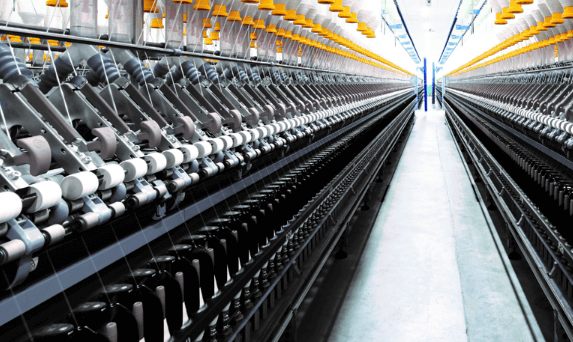The Impact of High-Speed Spindles on Precision Manufacturing

Table of Contents:
- Key Takeaways
- Introduction to Precision Manufacturing
- The Evolution of Machine Tool Spindles
- Key Features of High-Speed Spindles
- Material Considerations in Spindle Selection
- Balancing Speed and Precision
- High-Speed Spindles and Tool Life
- Integration of Spindles into CNC Machining
- Conclusion
Key Takeaways:
- The pivotal role of high-speed CNC spindles in precision manufacturing.
- The technological evolution of spindles and their impact on industry standards.
- Material considerations, balancing speed with precision, and how modern CNC integration enhances spindle performance.
- Future prospects of spindle technology and real-world success stories demonstrating their value.
Introduction to Precision Manufacturing
In modern manufacturing, the desire for perfection is not simply a goal but a necessity that shapes the pathway of innovation and technological advancement. Precision manufacturing signifies a sector that specializes in producing extremely accurate parts and components, where tolerances are measured in micrometers, and surface finishes mirror the standards set by the most delicate instruments. In this intricate dance of machine and material, the CNC spindle emerges as a central figure, capable of spinning materials into finely crafted pieces with expertise that merges speed with exactitude.
The emergence of high-speed spindles has revolutionized the way industries approach manufacturing processes, allowing for greater productivity without sacrificing the quality of the finished product. While the intrigue of metal and other materials is as old as industry itself, the application of spindles within precision manufacturing has ramped up the capabilities of what can be achieved. By enabling machine tools to operate at higher RPMs (revolutions per minute), these spindles signal a paradigm shift towards faster production times alongside elevated standards of accuracy.
As such, the machining landscape has been forever altered, influenced by the capabilities and performance of modern spindle technology. These vital components of the machining apparatus not only dictate the speed at which manufacturing can occur but ensure that each component produced adheres to stringent quality checkpoints, thus earning its place within the array of precision machined parts that make up today’s complex products.
The Evolution of Machine Tool Spindles
The story of spindle evolution is richly entwined with the history of the machine tool industry. Since the inception of automated manufacturing, the spindle has been a cornerstone of machine tool design, undergoing remarkable transformations. From belt-driven spindle designs of the early industrial era to the sophisticated, electronically-driven units we see today, technological advancements have continuously defined and redefined what is possible with these components.
Innovations in materials science, engineering, cooling technology, and bearing designs have all converged to propel spindle development forward. High-speed spindles, in particular, have benefited from the precise engineering of angular contact bearings capable of withstanding the intense forces generated at high rotational speeds. This marriage of robust internal construction with advanced external controls has been pivotal in allowing manufacturing to delve deeply into realms of complexity and precision that were previously inaccessible.
The direct impact of these developments is a dramatic boost in the efficiency and capabilities of modern machining centers. Today’s high-speed spindles drive tools through material with less effort and greater accuracy, maintaining the integrity of even the most demanding precision machining tasks.
Key Features of High-Speed Spindles
The defining traits of high-speed spindles are integral to their performance. They represent a confluence of technological attributes that, when expertly aligned, can significantly enhance machining productivity. The RPM range is a foundational feature; it outlines the operational scope whereby the high-speed spindle can perform safely and effectively. It’s no small feat to sustain balance and precision at rotational speeds that can exceed tens of thousands of RPM, yet modern spindle design makes this possible without sacrificing the part’s finish or tolerance.
When it comes to machining, power and torque are of paramount importance. High-speed spindles often come with an ability to maintain high torque at elevated speeds, thus cutting through materials effectively while keeping tool wear to a minimum. The importance of selecting the appropriate spindle based on power and torque cannot be understated—it’s a decision that directly influences machining efficiency, quality, and production economics.
Another crucial aspect is bearing technology. The type and quality of bearings used within the spindle determine its capacity to withstand the forces exerted during the machining process. Innovations in bearing design, such as ceramic ball bearings, have contributed to the enhanced performance of high-speed spindles, facilitating reduced heat generation, increased speed capabilities, and prolonged operational life.
Material Considerations in Spindle Selection
The harmony between spindle choice and material is pivotal in achieving optimal machining results. Different materials exhibit unique characteristics and challenges, such as hardness, thermal conductivity, and abrasiveness, necessitating matching spindle features for ideal cutting conditions. For instance, machining hard metals like titanium demands spindles that can deliver the needed torque and effectively manage heat dissipation to maintain the integrity of the tool and the workpiece.
Conversely, softer materials may require spindles that can operate at higher speeds without destabilizing the part or causing unwanted vibrations. These vibrations can compromise the surface finish, often a critical specification for precision components. Therefore, understanding how spindle specifications interact with various material properties is a key step in the selection process.
Operator expertise also plays a role; they must consider factors such as feed rates, cut depths, and suitable tool paths in tandem with knowing the limitations and capabilities of both the spindle and the material at hand. This knowledge is indispensable to ensuring spindle longevity, optimal part quality, and efficient operation over time.
Balancing Speed and Precision
The challenge of balancing speed and precision is akin to performing a high-wire act; it requires skill, experience, and no small measure of technological support. At the heart of this balancing act lies spindle technology, which must offer the ability to execute operations at high speeds while maintaining micron-level precision. To achieve this, modern spindles are equipped with dynamic balancing, which reduces the effects of vibrational forces, and vibration damping systems that absorb and mitigate oscillatory motion.
Intelligent monitoring systems and adaptive control algorithms further aid in maintaining the delicate equilibrium necessary for high-speed precision machining. These sophisticated systems constantly adjust operational parameters in real time to compensate for potential deviations in the cutting process. As such, they optimize the spindle’s spinning trajectory and safeguard each pass’s integrity, ensuring tool paths are followed with utmost fidelity.
Manufacturers must deploy these systems strategically, as proper application can yield profound improvements in the quality of the finished product and the efficiency of the manufacturing process. Through a blend of advanced spindle design and intelligent control technologies, today’s machine tools can thus perform at their peak, offering a level of precision that is truly at the forefront of modern manufacturing.
Read also Culinary Exploration: The Global Influence of Seafood Dishes
High-Speed Spindles and Tool Life
The connection between spindle speed and tool life is complex, where optimally managed high-speed spindles can, paradoxically, enhance tool longevity. Such optimization involves careful consideration of the machining parameters, including selecting cutting tools specifically engineered to withstand the stresses of high-speed operations. Factors such as cutting tool material, geometry, and coating significantly affect how tool wear is managed and mitigated.
Additionally, the spindle’s role in tool life extends beyond mere RPMs. Its ability to maintain constant cutting speeds, resist excessive thermal buildup, and deliver power uniformly contributes to a predictable and manageable wear pattern. These factors not only influence tool life but also affect part quality and the requirement for downtime due to tool changes.
By adopting a holistic approach that encompasses the right spindle, tooling, and operating conditions, manufacturing entities can not only prolong the effectiveness of their cutting tools but also drive down costs related to tooling and maintenance. This intrinsic relationship between spindle dynamics and tool life illustrates the importance of understanding and leveraging high-speed spindle technology’s full capabilities, ensuring the machining operation’s overall sustainability.
Integration of Spindles into CNC Machining
The fusion of high-speed spindles with CNC technology represents a landmark in manufacturing progression. The synergetic relationship between these components has unlocked a wealth of possibilities for precision machining, harnessing the advantages offered by digital technology. Through seamless integration, CNC systems enable high-speed spindles to operate with unprecedented control and accuracy, translating digital designs into tangible parts with exacting precision.
Critical to this integration is considering software capabilities that can accurately communicate with spindle hardware. This necessitates a synchronization of parameters between the spindle and the CNC controller, ensuring that each toolpath, feed rate, and depth of cut are translated into precise motions governed by the spindle. Therefore, the quality of the finished product reflects the harmony achieved between the digital realm of the CNC controller and the physical domain of the high-speed spindle.
Effective CNC integration opens doors to advanced machining techniques, such as high-speed milling and drilling, which leverage spindle capabilities to deliver exceptional products at reduced cycle times. This symbiosis paves the way for trifectas of efficiency, precision, and productivity that continue to push the boundaries of what is achievable in manufacturing environments.
Conclusion
The intricacies of precision manufacturing rely heavily on the tools’ abilities within the machinist’s arsenal, and few have had a greater impact than the high-speed spindle. From its critical role in maintaining tolerances to its influence on production times and tool life, the high-speed spindle stands out as a significant contributor to the advancement of manufacturing technologies. As industries drive forward in their quest for speed, efficiency, and precision, the spindle remains at the heart of this quest, continually evolving to meet the demands of a complex and ever-changing landscape.
Looking ahead, the spindle’s journey is far from complete. With ongoing research and development poised to push the envelope of what’s possible, the future holds promise for even more remarkable feats of precision manufacturing. Therefore, spindles will remain integral to the industry and become increasingly central as we move towards an era of intelligent, sustainable, and highly efficient production methodologies. This journey of innovation, built upon the foundations of speed and precision, will be one to watch in the dynamic manufacturing world.





